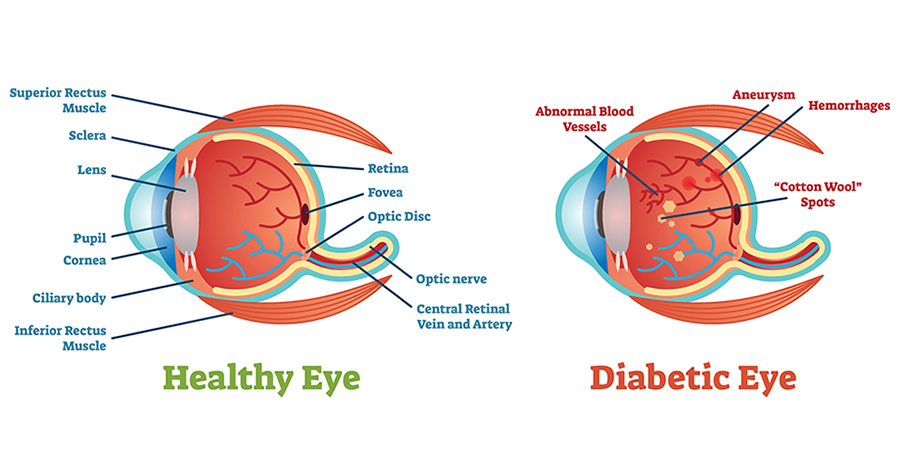Diabetic Eye Exam
People with diabetes may experience a variety of eye issues known as diabetic eye disease. These disorders include glaucoma, cataracts, diabetic macular edema, and diabetic retinopathy. Diabetes can harm your eyes over time, which could result in blurry vision or even blindness. However, by managing your diabetes, you can take measures to stop diabetic eye disease from occurring or to stop it from growing worse.
The best approaches to control your diabetes and maintain the health of your eyes are to
- Control your Diabetes ABCs: A1C test (blood glucose level), Blood Pressure, Cholesterol
- If you smoke, seek assistance to stop
- Have your eye dilated annually
What effects does diabetes have on my eyes?
You are unlikely to experience vision loss as a result of high blood sugar in the short term. When they are altering their diabetic care regimen or medications, people can have temporary blurred vision for a few days or weeks. High blood sugar levels may alter fluid balances or result in swelling of the tissues in your eyes that aid in focusing, impairing your vision. This kind of hazy vision is transient and fades away when your blood sugar levels return to normal.
The tiny blood veins in the back of your eyes may become damaged if your blood glucose levels continue to be high over time. This can be developed even during prediabetes (when blood sugar levels are over normal but not high enough to be classified as having diabetes). Swelling may result from damaged blood vessels that leak fluid. It’s also possible for new, vulnerable blood vessels to form. These blood vessels have the potential to leak into the center of your eye, leave scars, or create an eye with dangerously high pressure.
Blood vessel issues are the most common cause of significant diabetic eye disorders. The four eye conditions that can endanger your vision are Diabetic retinopathy, Diabetic macular edema, Glaucoma, and Cataracts.
How do optometrists identify diabetic eye problems?
When diabetic eye disease or vision loss first develops, there are often no warning signs. A comprehensive, dilated eye exam assists your doctor in detecting and treating eye problems early—often before significant vision loss occurs.
The best way to screen for diabetes-related eye issues is to get a comprehensive, dilated eye exam. To make your pupils bigger, your doctor will put drops in your eyes. This enables the doctor to use a special magnifying lens to check a greater area at the rear of each eye.
The majority of diabetes patients should have a comprehensive eye exam once a year with an eye care specialist. Depending on your type of diabetes and how long it has been since your initial diagnosis, your personal healthcare team may recommend a different strategy.
Read more about Diabetic Eye Exam.
Source: National Institute of Diabetes and Digestive and Kidney Diseases